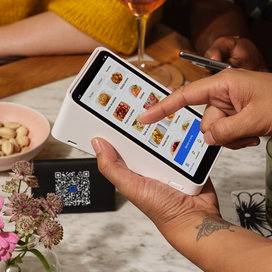Table of contents
It’s simple logic, but if you’re not selling the right products at your business, you’re leaving money on the table. But how do you know which items to stock? A few key strategies:
Look to your data.
The data that lies within your POS system is a goldmine when it comes to making crucial business decisions, including which products to stock up on. In Square’s Dashboard, you can get a quick snapshot of which products are selling the best. You can also look back at historical data to get a sense of which items flew off the shelves during certain seasons, and which had lackluster sales.
Vosges Haut-Chocolat, a chocolate company with retail locations across Chicago and New York (as well as wholesale contracts with stores like Whole Foods and Neiman Marcus), has always experimented with unique flavors. It was the first to put “bacon and chocolate” on the map and continues to innovate with unusual ingredients like ginger, wasabi, green tea, and coconut ash.
The company, which uses Square’s POS in all its retail locations, looks to its Dashboard reporting to get extremely granular about product and inventory decisions. “We pull reports to see which new products sold the most at a certain store the prior week,” says retail and support manager Rhoda Wenzel. “We can see whether the milk chocolate version of one product is selling better than the dark chocolate version, for example. It’s been really helpful.” Rhoda says this information has been especially useful as they ramp up seasonal production and marketing plans for holidays. “Square data from last year helps us figure out exactly when we should launch products—it helps us set the timeline of when we want to roll certain items out.”
Do some consumer testing.
Data is a key component in deciding which products to sell, but so is the information you can gather by testing things live with customers. If you’re considering bringing in a new product line, try hosting an event where you invite loyal customers to come in and try it out. (You can use Square Email Marketing to easily send an email to just your loyal customers.) Talk to people to get a sense of what they like or dislike (and why) about the potential new offering. If the reception skews overwhelmingly positive, you know you have a winner.
Identify opportunity gaps.
If you’re one of five retailers in a neighborhood selling women’s shoes, you need to find a way to differentiate your product line. One way to do this is by identifying opportunity gaps within the market. Is there a rare item that’s typically hard to find? A buzzy brand or model that you know sells out quickly across all online retailers? If you know your space, you should be hip to these opportunity gaps already. But you should also tap into social media, following influencers in your space (like celebrities, if you’re a shoe retailer) who are likely to set trends around the items they’re touting.
Another way to identify opportunity gaps is to leverage SEO (search engine optimization) learnings. This tactic is fairly technical, so if you’re not versed in SEO, it may be worthwhile to hire an expert for a few hours. You’ll be able to spot what people are searching for in your space (to use the shoe retailer example, something like “Adidas Originals”) and adjust your product line accordingly.
Offer related products.
When your POS data tells you an item is consistently selling out, it’s a good indicator that you should offer related products. If you sell skin care products and a particular high-end sunscreen is always popular with your customers, consider stocking different brands. Then if that popular item is sold out, you’re less likely to lose out on a sale because you can offer customers an alternative.
Knowing which products to stock is key to your business’ success. Being measured and strategic about it will help drive more sales.
![]()












